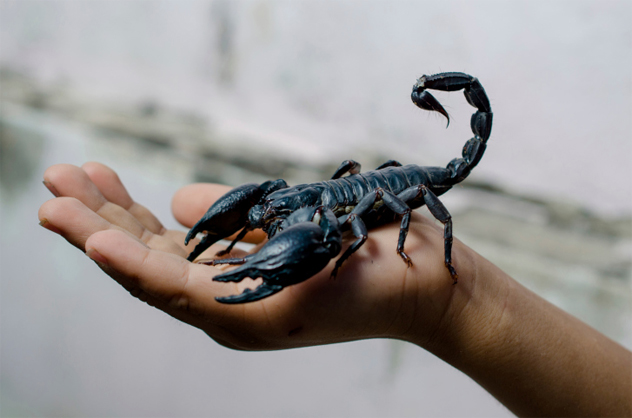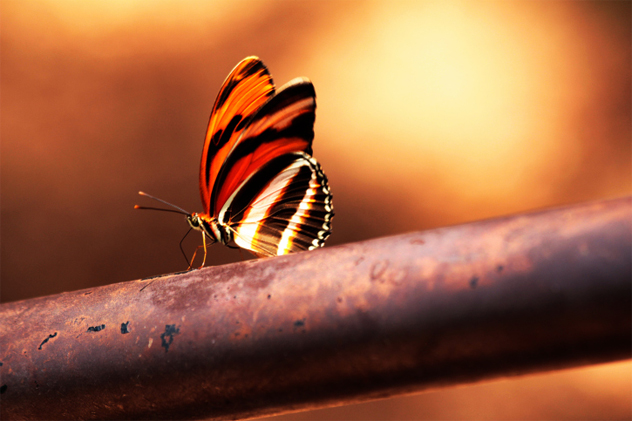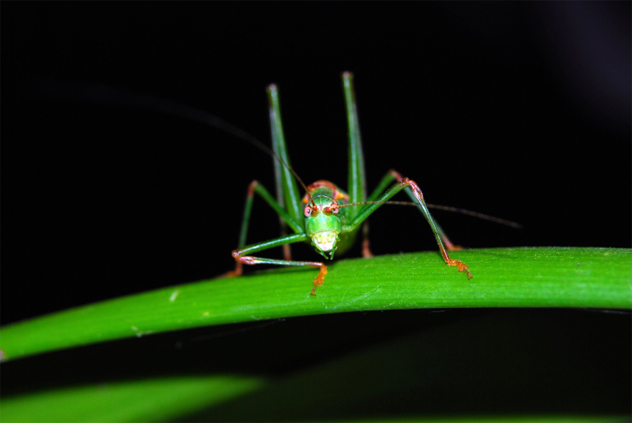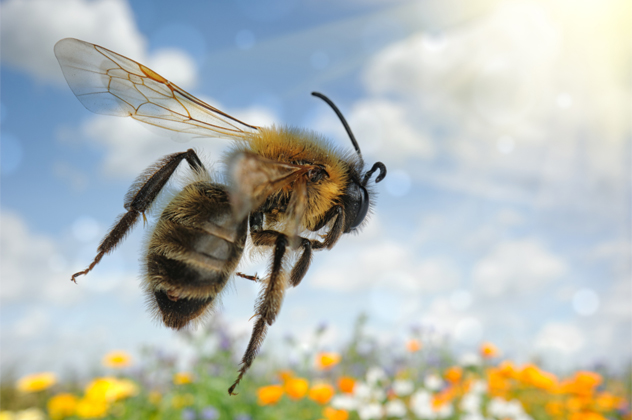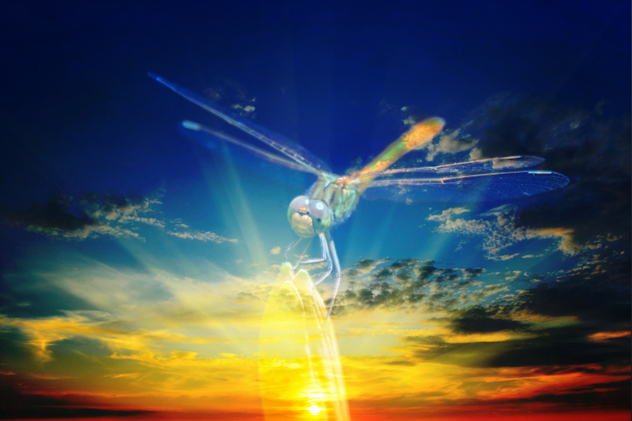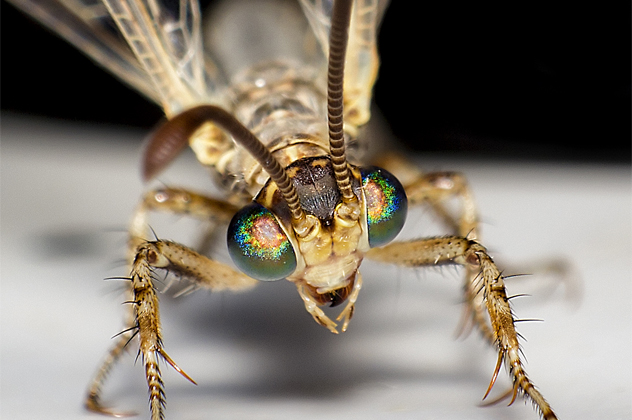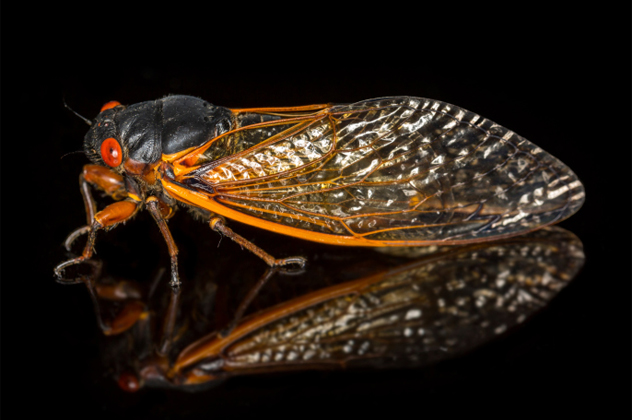10Mosquitoes
In Buddhist lore, mosquitoes are the jerks of the spiritual world. Lafcadio Hearn’s Kwaidan talks about how Buddhists believe that the pervasive bloodsucker is the spiritual reincarnation of the wicked of the Earth. A Vietnamese folk tale also tells of the origins of the mosquito. According to the tale, a young man desired to resurrect his dead wife, a vain women to whom he had been devoted. After making a deal with a genie to bring her back from the dead, the young man used three drops of his blood to revive her. When his wife repaid his devotion by running off with a wealthy sea captain, he realized her vanity and set her free—all he asked was that she return his three drops of blood, since he wanted no part of himself inside her. Just wanting her husband to leave her alone, she took a knife and pricked the tip of her finger. As soon as the blood began to flow, however, she shriveled to a husk and died again. She returned as the first mosquito in order to obtain three drops of blood from her former husband to return to human form.
9Scorpions
Scorpions aren’t exactly the most pleasant of creatures, so it may be surprising to learn that their role in the ancient myths was somewhat more noble. To the Mesopotamians, scorpion-men guarded the mountains where the Sun rose and set and served as spirits of the Sun god. In Egyptian myth, the goddess Isis was protected by seven scorpions who were crafted into the form of guardians and pseudo-gods. However, in one story, a noblewoman shunned Isis when she visited her town. Isis’s scorpion guardians, angered by the noblewoman’s rudeness to the mother god, sneaked into the woman’s home and stung her son as punishment. Isis, in her kindness, revived the boy by canceling the effects of the poison, and the woman thanked her by becoming a generous citizen to the end of her days.
8Butterflies
Maybe you caught them as a child and pinned them to the wall, or maybe you just let them go, like a humane person. Either way, butterflies hold a delightful fascination for people both young and old. The Japanese believed that butterflies were the souls of people, according to Lafcadio Hearn in his book Kwaidan. Hearn wrote that the belief that butterflies were human souls was so popular that when a swarm of butterflies appeared over Kyoto just before a huge rebellion was about to take place, the Japanese took it as an omen of death and claimed that they represented the souls about to perish in the battle to come. However, there were also some positive connotations—if a butterfly came through your screen door, it was said that the one you loved the most would soon visit. In other parts of the world, such as Louisiana, seeing a white butterfly might mean good luck is on its way.
7Grasshoppers
Whether you believe they’re ugly little critters or nature’s jovial hoppers, the grasshopper hasn’t avoided the reach of folklore. The Yaqui, a tribe that lives in the Southwestern United States and Mexico, tells the story of the grasshopper and his friend the cricket and their encounter with a lion. After leaving a banquet that left the grasshopper inebriated from wine, the grasshopper and the cricket jumped on top of a sleeping lion and, quite logically, began singing. The lion, annoyed at his nap being disturbed, attempted to walk away, but the grasshopper and the cricket sneaked onto his tail and continued their singing no matter where the lion went. The lion, understandably, whipped the two off his tail and now forever hides far away from the grasshopper and the cricket in order to avoid their singing when he sleeps.
6Bees
With their can-do attitude and hardworking nature, it’s no wonder that bees have their own place in mythology. The Hindu texts known as the Vedas speak of how the bees killed the destroyer of honey, and the Greeks spoke about the beekeeper god and faun Aristaeus. Aristaeus once tried to steal Orpheus’s wife, Eurydice, who stepped on a snake and died when the snake bit back in retaliation. As punishment, Aristaeus lost all of his bees for the death of Eurydice. In his guilt and desperation, Aristaeus gave a sacrifice to Apollo and had his bees restored, giving the tale a happy ending . . . if you discount Orpheus losing Eurydice forever, but that’s a myth for another time. The Egyptians also had thoughts on the bees, believing them to be representations of the soul. They said that the humming of souls in the afterlife came back to the mortal realm as the buzzing of the bees.
5Spiders
Spiders are perhaps the most famous—and reviled—of arachnids. However, in many cultures the spider serves a much more fascinating purpose. To the Hopi, Grandmother Spider spun the world into existence, and the story of Anansi the trickster is well known. To the people of Oceania, however, the spider served a unique purpose. The people of the island of Nauru believe that Areop-enap, the great spider, was once captured by a clam. Using her ancient powers, she summoned a caterpillar to come and fight the clam for her release. The caterpillar’s fight was so great that his very sweat killed the clam and became the sea. The upper shell of the clam became the skies, and the lower shell became the land. Areop-enap turned the caterpillar, who died in the struggle, into the Milky Way and weaved plants into existence via her silk.
4Ants
Ants, arguably some of the toughest insects in the world, are revered throughout the world for their ceaseless work and loyalty. The Yoruba of West Africa tell the story of a snoopy old man named Ole and his relationship with the ants. In the story, Ole found that ants had built their home in his house, but he decided to let them stay and continue building their anthill. Ole thought that once they finished, he could sit on top and look at everyone from his high perch. When they were finished, Ole did as he said and sat on top—not noticing that the ants had begun to destroy his home and eat his food while he was up on top of the hill spying on his neighbors. Losing his home and food while snooping on the townsfolk earned him a great deal of ridicule. Ole later died, but no one is sure whether he died of “shame or of laziness.”
3Dragonflies
Dragonflies are some of the most beautiful denizens of the insect world, and it’s not hard to see why there were christened “dragonflies” with their long, fearsome-looking bodies. The Persians tell the story of how dragonflies saved the Sun, and, of course, it involves a dragon. One day, the wise man of a village told his people that a mighty dragon would swallow the Sun whole, plunging the world into eternal darkness. The beast was so mighty that even Heracles of Greek fame could not defeat him, so the wise man conjured up a plan. He had his men catch seven dragonflies and wait for the dragon to arrive. When the dragon finally arrived, the wise man released the seven dragonflies at intervals so as to scare the dragon, who was terrified by them and the darkness he had caused. After the wise man released the final dragonfly, the dragon released the Sun and the day was saved.
2Ant Lions
The ant lion is a lacewing-like insect that doesn’t quite resemble either an ant or a lion, but the creature has its own story in myth nonetheless. The ant lion of classical myth was one that was said to part ant and part lion, because classical mythology makes sense like that. The creature’s duality was its own undoing—because it was part lion, it could not eat vegetation, and because it was part ant, it could not eat meat. So, since the creature was unable to eat anything, it would starve to death, a fate bound to it by its own tragic origins. Other accounts around the time simply describe the ant lion as the “lion of ants,” being the killer of smaller ants and the bane of their existence. While the latter description sounds far more logical, we sort of like the tragic story of the mythic ant lion.
1Cicadas
Whether you find their singing whimsical or downright annoying, cicadas have their own place in world mythology. In the Andaman Islands, it is believed that the coming of night and the cicadas coming out to sing aren’t correlated, but are in fact one and the same event—the singing of the cicadas is in fact an inextricable piece of the night. One legend tells of an islander’s ancestor who stepped on a cicada, and the cicada’s cry of pain caused everlasting night to fall upon the world. To bring back the light, the locals began singing and dancing until the Sun finally returned to the Earth. Another legend states that the original Andaman Islanders would intentionally make cicadas cry in order to get a break from the Sun’s relentless heat. Vlad Vekshtein is hoping to have a book out one day, if he can avoid reading books on myths and legends daily.

